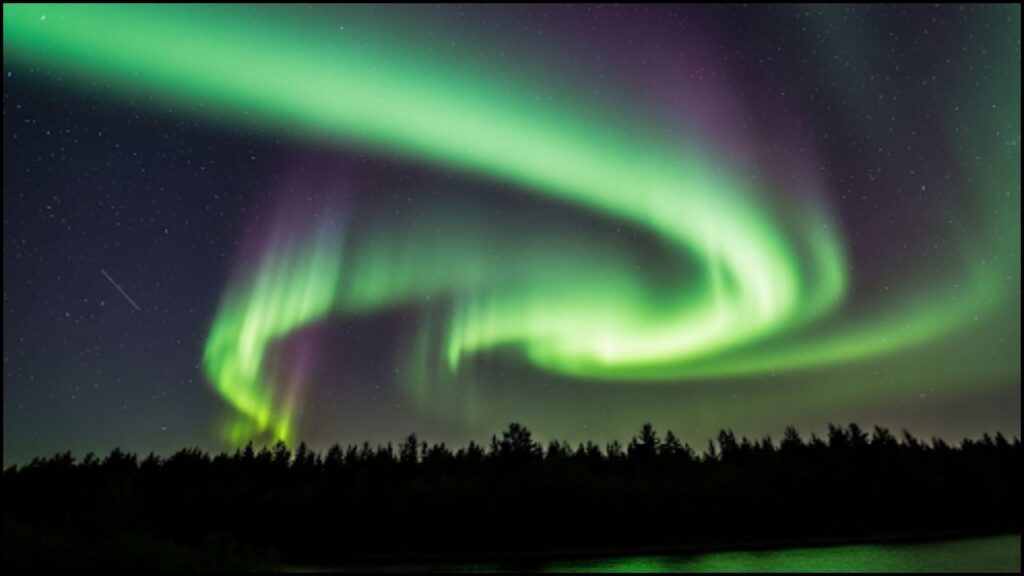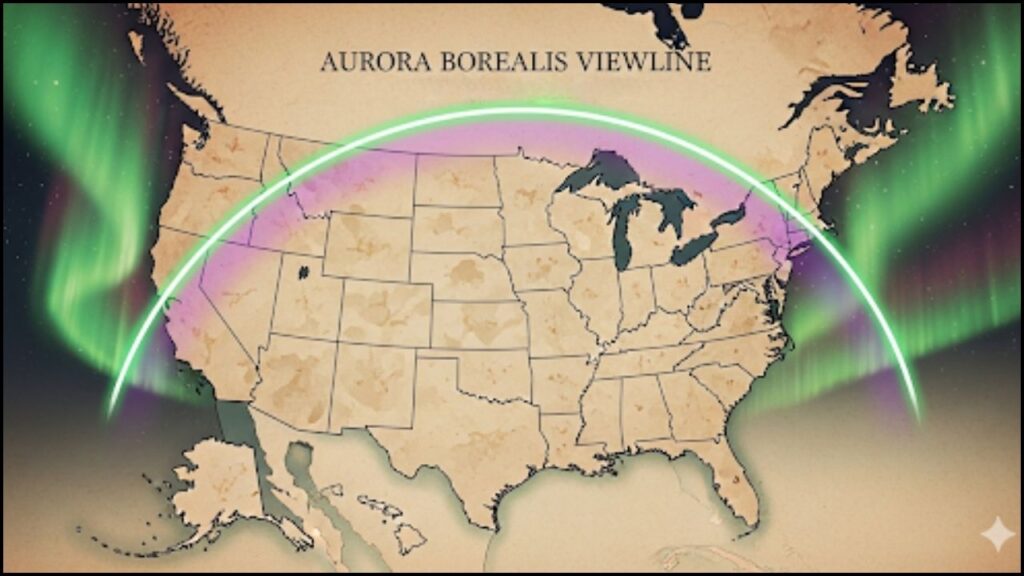A powerful G4-class geomagnetic storm is forecast to make the northern lights, or aurora borealis, visible over at least seven U.S. states tonight, extending the light show far south of its typical polar range. The National Oceanic and Atmospheric Administration (NOAA) Space Weather Prediction Center (SWPC) has issued a severe geomagnetic storm watch, warning that the event could also impact power grids and satellite communications. The heightened activity is a result of a significant coronal mass ejection (CME) from the sun.

What is a G4 Geomagnetic Storm?
A geomagnetic storm is a major, temporary disturbance of Earth’s magnetosphere caused by the interaction of solar wind and Earth’s magnetic field. The severity of these events is measured on the G-scale, a five-level index developed by the NOAA. A G4, or “Severe,” storm is the second-highest level on this scale.
According to NOAA, G4 storms occur roughly 60 times during a typical 11-year solar cycle. They are often triggered by a coronal mass ejection, a massive burst of solar plasma and magnetic energy from the sun’s outer atmosphere. When a CME is directed toward Earth, it can cause the planet’s magnetic field to reconnect with the sun’s, allowing a torrent of charged particles to pour into the upper atmosphere.
“A G4 event is a significant occurrence that we track very closely,” said Dr. William Murtagh, program coordinator at the NOAA SWPC. “This level of storm has the potential to cause widespread voltage control problems on power grids and can degrade satellite navigation for hours.”
Visualizing the Storm’s Potential Reach
The primary visual effect of a geomagnetic storm is the aurora borealis. While a G1 or G2 storm typically limits the aurora’s visibility to high-latitude regions like Alaska and Canada, a G4 storm can push the phenomenon much further south. Forecasters at the NOAA SWPC have predicted that the northern lights could be visible tonight on the northern horizon as far south as:
- Idaho
- Montana
- North Dakota
- Minnesota
- Wisconsin
- Upper Michigan
- Maine
Visibility is heavily dependent on local conditions, including cloud cover and light pollution. Observers are advised to find a location away from city lights and to look toward the northern horizon after sunset.

The Scientific Mechanism Behind the Display
The stunning colors of the aurora are the direct result of solar particles colliding with gases in Earth’s atmosphere. As the energetic electrons and protons from the sun enter the atmosphere, they transfer energy to oxygen and nitrogen atoms.
- Green: The most common auroral color, produced by collisions with oxygen atoms at altitudes of about 60 miles (100 km).
- Red: A rarer color, created by oxygen atoms at higher altitudes (up to 200 miles / 320 km).
- Blue/Purple: Result from collisions with nitrogen molecules.
The intensity and shape of the aurora, including its characteristic arcs, bands, and curtains, are dictated by the strength of the geomagnetic storm. A severe G4 event delivers a much higher density of charged particles, leading to brighter, more dynamic displays that can be seen from lower latitudes.
Potential Impacts Beyond the Light Show
While the aurora is a captivating sight, the same space weather event can pose risks to modern infrastructure. Geomagnetic storms induce powerful electrical currents in long-distance conductors, such as power lines and pipelines. “When you have a storm of this magnitude, the potential for geomagnetically induced currents (GICs) is a primary concern,” said a spokesperson for the North American Electric Reliability Corporation (NERC). “Our members are actively monitoring the situation and have procedures in place to mitigate potential impacts, such as triggering protective systems to prevent damage to transformers and other critical grid assets.”
The NOAA SWPC’s advisory notes that a G4 storm could lead to “widespread voltage control problems” and the “mistaken tripping out of key assets from the grid.” Though large-scale blackouts are rare, the threat highlights the vulnerability of electrical systems to solar activity. Satellite operations are also susceptible. The increased drag on low-Earth orbit satellites can require flight controllers to make adjustments to their orbits. Moreover, the charged particles can cause “single-event upsets,” or temporary malfunctions, in satellite electronics, and can degrade the accuracy of GPS and other satellite navigation systems for hours.
How to Stay Informed and See the Aurora
For those hoping to see the aurora, the forecast calls for peak activity tonight, lasting into the early hours of Thursday. The best viewing opportunities are typically between 10 p.m. and 2 a.m. local time. The primary requirements are a clear sky, a location with minimal light pollution, and patience. NOAA’s SWPC provides real-time updates and a 30-minute aurora forecast. This tool, based on the OVATION model, helps observers pinpoint the best time and location for viewing the aurora borealis.
The current event is part of the sun’s normal 11-year cycle, which is heading toward a period of solar maximum. This peak in activity is expected to bring more frequent and powerful space weather events over the next couple of years, increasing the chances for more widespread aurora sightings.
Geomagnetic Storm Spurs Rare Northern Lights Event, Offering Spectacle for Millions
